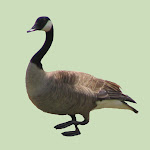At birth, Jingle Luis' feet were severely malformed: an extreme case of clubbed feet, hers were upside down and twisted backwards. Walking was impossible without complete reliance on crutches. Because Jingle also suffers from mild spina bifida (a life-shortening spinal cord defect) doctors in the Philippines had found her unqualified for corrective braces or surgery as a child. When a staff physician from the Montefiore Medical Center in New York traveled to the Philippines for a Christian Mission, however, she was discovered and the Bronx hospital agreed to perform the surgery for free! By inserting pins into her feet and slowly turning them, Jingle's doctors were able to correct her condition.
Slipping on a pair of pink and white sneakers (the first shoes she'd ever worn) Jingle then took several steps all on her own. While she'll have to wear support braces for about a year in order for her bones to reset, she is expected to make a full recovery. Move over Jordan... if Jingle doesn't deserve a sneaker sponsorship, nobody does!
For the original story and photos of smiling Jingle, check out this link:
http://news.aol.com/health/story/_a/girl-with-twisted-feet-takes-first-steps/20080703092009990001
Showing posts with label recovery. Show all posts
Showing posts with label recovery. Show all posts
Tuesday, July 8, 2008
Friday, July 4, 2008
The Big Guys Make Way for Ducklings
The gradual rise in gray whale populations (good news!) is having a positive effect on other recovering species in the adjacent areas of Puget Sound (more good news!), going so far as to keeping wildlife off the already 60-species-long Endangered Species list (great news!).
Firstly, the UC Davis SeaDoc Society happily reports the growing numbers of gray whales near Sandy Point on Whidbey Island, about 30 miles north of Seattle. As the San Juan Islander explains, "Gray whales suction-feed, sieving out ghost shrimp and other small sea animals from the sea floor. As they eat, the whales create giant pits and stir up clouds of invertebrates, which settle back to the bottom and flourish in the altered landscape left after the whales have passed." That means that the more whales nuzzling around in the bottom of the ocean, the more food there is for birds who dine on what gets brought up. That's a win-win, baby!
Researchers observed sea ducks (surf scoters and white-winged scoters) sticking close by gray whales and diving under the water in their wake. This is important because it's the first time the symbiotic relationship between cetaceans and birds that feed on the sea bottom has been officially documented.
SeaDoc Society Director Joe Gaydos summed up this good news quite well:
“Usually we are trying to deal with endangered species eating other endangered species, so this evidence that the recovery of one species could benefit the recovery of other is a welcome breath of fresh air.”
The SeaDoc Society, "working to ensure the health of marine wildlife and their ecosystems through science and education":
www.seadocsociety.org
for the original story:
http://www.sanjuanislander.com/groups/seadoc/gray-whale.shtml
for lyrics to the song Fish & Bird by Tom Waits, a slightly more romantic, slightly less realistic take on a similar situation:
http://www.sing365.com/music/lyric.nsf/Fish-Bird-lyrics-Tom-Waits/C07140AFAD07BE4E48256BBC0027375F
Firstly, the UC Davis SeaDoc Society happily reports the growing numbers of gray whales near Sandy Point on Whidbey Island, about 30 miles north of Seattle. As the San Juan Islander explains, "Gray whales suction-feed, sieving out ghost shrimp and other small sea animals from the sea floor. As they eat, the whales create giant pits and stir up clouds of invertebrates, which settle back to the bottom and flourish in the altered landscape left after the whales have passed." That means that the more whales nuzzling around in the bottom of the ocean, the more food there is for birds who dine on what gets brought up. That's a win-win, baby!
Researchers observed sea ducks (surf scoters and white-winged scoters) sticking close by gray whales and diving under the water in their wake. This is important because it's the first time the symbiotic relationship between cetaceans and birds that feed on the sea bottom has been officially documented.
SeaDoc Society Director Joe Gaydos summed up this good news quite well:
“Usually we are trying to deal with endangered species eating other endangered species, so this evidence that the recovery of one species could benefit the recovery of other is a welcome breath of fresh air.”
The SeaDoc Society, "working to ensure the health of marine wildlife and their ecosystems through science and education":
www.seadocsociety.org
for the original story:
http://www.sanjuanislander.com/groups/seadoc/gray-whale.shtml
for lyrics to the song Fish & Bird by Tom Waits, a slightly more romantic, slightly less realistic take on a similar situation:
http://www.sing365.com/music/lyric.nsf/Fish-Bird-lyrics-Tom-Waits/C07140AFAD07BE4E48256BBC0027375F
Subscribe to:
Posts (Atom)
